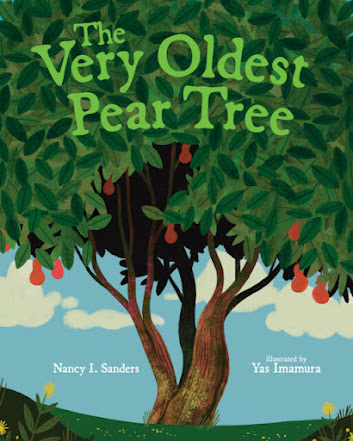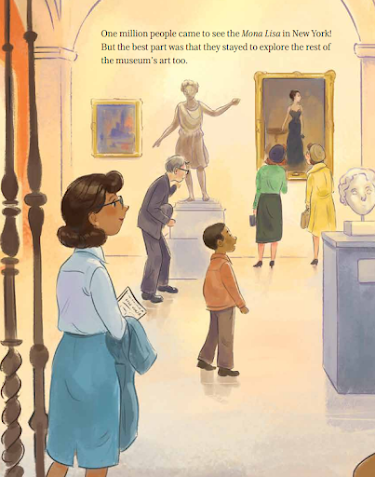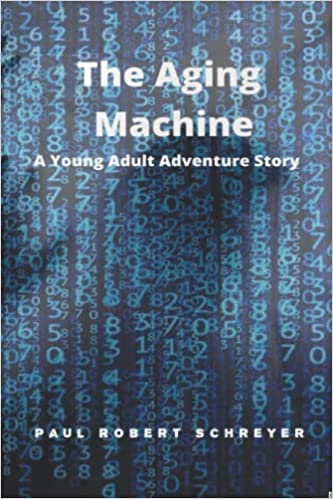BATTLE OF THE BUTTS (Running Press, 2021) by Jocelyn Rish with illustrations by David Creighton-Pester, is really about a battle to determine which animal has the best buttocks of all. As Jocelyn tells her young readers in the introduction:
You're the judge in the Battle of the Butts. As you meet each challenger in this battle and learn about their posterior power, it's up to you to rate them:
- Terrific Tushie
- Remarkable Rump
- Cool Caboose
- Passable Posterior
- Boring Backside
What kid can resist being a judge--particularly a judge of animals' backsides?!
With that intriguing set-up, Jocelyn begins this fact-filled and incredibly kid-friendly book.
Two spreads are dedicated to each of the ten challengers" posteriors: the "Pudgy Posterior" A.K.A. the Manatee; the "Tough Toushie A.K.A. the Wombat; the "Bum Breather" A.K.A. the Fitzroy River Turtle; the "Toot Talker" A.K.A. the Herring; the "Cannon Caboose" A.K.A. the Bombardier Beetle, the "Projectile Pooper" A.K.A. the Silver-Spotted Skipper Caterpillar; the "Fatal Farter" A.K.A The Beaded Lacewing; the "Beach Bum" A.K.A. the Parrotfish; the "Two-headed Tooter" A.K.A. the Sonoran Coral Snake; and the "The Hotel Hiney" A.K.A. The Sea Cucumber.
(Clearly, Jocelyn has too much time on her hands if all she is doing is sitting around thinking up amazing alliterations!)
The Manatee's Posterior Power
The book begins with the manatee (which by the way, I had the pleasure of swimming with a few years ago. Unfortunately, the water was a little murky so I didn't get to observe their "posterior power" -- they swim using farts!).
Besides that important piece of information, In the "Extra Booty" section I also learned that manatees' intestines are as long as a bowling alley (65 feet) and as wide as a dollar bill (6 inches in diameter). But wait--there's more!
Butt Bonus: When manatees are unable to poop because they're constipated, they lose buoyancy control and float with their tails higher than the rest of their bodies. Once they are finally able to poop again, they will let out a massive fart and are then able to swim normally.
I know... you've been waiting all your life to know that about manatees, right?
The Wombat's Posterior Power
Jocelyn's research took her far and wide. In the process she found the Australian wombat. You'll never guess what their posterior power is so I'll let you in on a secret---their butts are shields that protect themselves and destroy their enemies!
If a predator manages to push its head into the entrance, the wombat uses its strong legs to slam its butt against the predator's head. Wham! It crushes the predator's skull against the roof the burrow, killing it. That's one deadly derrière!
Not only that, but according to the "Butt Bonus," wombat poop is shaped like cubes. They mark their territory on rocks and logs and the square shape stops the pellets from rolling onto the ground. Pretty amazing, huh?
Whether you want to read more about a turtle who breathes through his butt; herring who communicate through farts ("Bluurp! Hey dude, you're too close to my left, move over a few inches); or the beetle that deploys a chemical poison from his "super soaker butt"--than this is the book for you! Parents, caretakers, teachers--you all will love introducing your pre-school through second grader to these crazily cool creatures. (Uh oh, Jocelyn! Your alliteration is contagious!)
The book ends with a challenge to the kid judges and a glossary highlighting unfamiliar words. Kudos also to artist David Creighton Pester for his clever and colorful illustrations.
AUTHOR INTERVIEW
In this interview Jocelyn not only shares what's coming up next, but her (very early!) inspiration for writing BUTTS.
CAROL: “Why butts?” Why did you think of this idea in the first place?
JOCELYN: I'm not sure if I should admit this, but I have a pretty terrible Twitter habit. Late one night when I should have been doing something productive (like sleeping!), I was mindlessly scrolling Twitter when I saw an adorable graphic of a manatee that said, “Manatees can control their buoyancy through an endless cycle of farting. There. That’s a thing you know now.” I didn't think that could possibly be true, so I googled, and it was! The best part is the google search also brought up articles about other animals that do weird things with their tushies. From that night of learning funny fanny facts, BATTLE OF THE BUTTS was born!
 |
The picture that started it all.
FUN FACT: Jocelyn has been enamored with manatees since she was a kid. |
CAROL: How did you pick these ten animals?
JOCELYN: As I discovered there were other animals out there with remarkable rumps, I started googling things like: "animals with weird butts" and "funny butt abilities" and other silly terms like that. As new animals came up in searches, I added them to my notes. Then I researched each animal further in scientific journals to separate fact from internet legend. When it came time to decide on the final ten animals, I tried to pick a variety of scientific classifications, with different types of booty abilities, and a mix of water and land (there are five of each). But I still have plenty of animals with funky fannies available to make BATTLE OF THE BUTTS NUMBER 2. 😆
CAROL: I love the judging format. How did you come up with that?
JOCELYN: Thank you! As I read about the various fanny facts, I envisioned the animals on stage showing off their tushie talents reality show style, like America’s Got Talent or American Idol. I started playing around with titles like Butts Got Talent or Butt Idol, but those didn’t feel right. When I hit on the alliteration of BATTLE OF THE BUTTS, I immediately knew that was the title. So then I started thinking, if it’s a battle, then there has to be a winner, and if there’s a winner, there should be judges – and of course the kids will be the judges! From there, it was just a matter of hitting up the thesaurus to come up with fun names for each judging category.
CAROL: The language is very kid-friendly. Did it take many drafts to get in all the lovely alliteration? Did you have any kid beta-readers?
JOCELYN: I’m so glad you think so! It was important to me that along with the funny butt facts that the book also be fun to read out loud. I’m actually an alliteration aficionado (probably too much so!), so it kind of comes naturally as I write. I found lists online of synonyms for butts, farts, and poop (there are a shocking number of alternate potty words!) and kept those beside my thesaurus as I wrote my first draft. Then I sent it to my critique partners, and from their feedback, I did some tightening and tweaking. At that point, I felt ready to query, so it was really only two drafts.
My cousin’s son loves animals and nature, so he read it for me and found an issue where I said poisonous rather than venomous when talking about the snake, so that was a great catch (Thanks, Colton!). I also read it with my Reading Partners student, having him mark places that made him laugh and places he didn’t understand. That was very helpful for adding words to the glossary.
CAROL: How has the book been received? Are schools using it? Do you have plans for online curriculum guides?
JOCELYN: Friends and even strangers on social media have been so sweet about sending me videos of their kids reading BUTTS and giggling. One little girl was laughing so hard she fell over sideways on the couch, which totally made my day. So I think kids are enjoying it like I hoped.
I participated in World Read Aloud Day with ten schools last month and had such a blast reading with the kids. They asked such insightful questions. And I’m reading with eight more schools next week for Read Across America Day – I can’t wait! I’d love to have a curriculum guide, but I’ll definitely have to outsource that. It’s on my To Do list!
CAROL: What awards have you won?
For BATTLE OF THE BUTTS, I was thrilled that the Missouri Association of School Librarians included BUTTS on their 2022 Dogwood Book List for Nonfiction.
As for non-BUTTS awards, I’ve been fortunate to win several like the 2020 Book Pipeline YA Unpublished Contest, the 2013 SCBWI WIP Grant for Contemporary Novel for Young People, and the 2009 Highlights Fiction contest.
It’s because of that last one that I first met you because my prize was tuition to the Highlights Chautauqua summer session!
 |
This picture popped up in Jocelyn's FB feed.
I'd forgotten we were there together! |
CAROL: What’s next?
The illustrator David Creighton-Pester is currently working his magic again on BATTLE OF THE BRAINS, which is scheduled for release on Nov 8, 2022. It’s about ten animals with mind-blowing brain abilities.
And I’ve pitch my agent and editor several ideas for a third BATTLE book, so fingers crossed. Also, I was inspired by Tara Lazar’s Storystorm with several fiction ideas, one of which I’m currently scribbling about in my notebook. I hope it shapes into something creepy and fun!
GIVEAWAY INFORMATION
No giveaway this time. I hope my grandkids laugh themselves off the sofa when I read them this book! Congratulations to Joan Edwards who won The View from the Very Best House in Town and to Donna Johnson for winning I Want My Book Back.


































